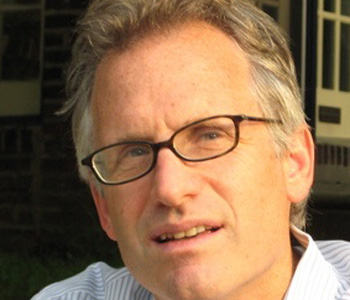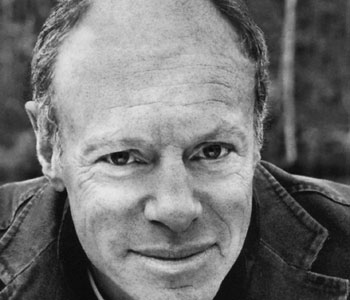Sarah Schrank
Art and the City: Civic Imagination and Cultural Authority in Los Angeles
University of Pennsylvania Press
224 pages, 6 x 9 inches
ISBN 978 0812241174
My book argues that in twentieth century Los Angeles, a city famous for promoting movies and celebrities and a leisurely lifestyle, public art with its ambiguous meanings and controversial forms became a political problem. Rich people who had invested in Los Angeles’ growth in the early 1900s had, in fact, invested in a city that did not quite exist yet. The way to bring it into being was to attract white, middle class residents who would buy homes and cars and other consumer goods and build Los Angeles into a planned urban paradise intertwined with suburban development and an agricultural economy.
Promotional advertising that used bright visual images was employed to attract such people. Paintings of bountiful crops, exotic people, enormous flowers, and gorgeous landscapes appeared on the sides of train cars, produce crate labels, Chamber of Commerce fliers, real estate brochures, and travel literature that circulated across the country and around the world. In Art and the City, I refer to these colorful fantasies of what Los Angeles and southern California should look like as a product of the civic imagination.
From its modern origins, then, Los Angeles was wedded to a project of self-representation. Visual arts were a key element in the efforts to promote a city of wealthy leisure nestled in an Edenic landscape. Representational landscapes became the preferred genre in municipal and county art institutions and often echoed themes found in the promotional materials. With Los Angeles’ booster interests and art interests often embodied in the same people and institutions, it was frequently difficult for modern artists and collectors of modern artworks to get their work into local exhibitions, juried shows, and galleries.
This created tension within the city’s art communities, with animosities building through the 1930s and 1940s to come to fruition in 1951, when local artists painting in an abstract expressionist style were accused of being communists and subjected to humiliating public hearings by members of Los Angeles’ city council. By attempting to ban abstract painting and sculpture from city-sponsored exhibitions, municipal officials highlighted the fraught relationship between art and local politics. Spectacular public art controversies would follow throughout the late 1950s and 1960s, with the most recent in 2005. Art and the City traces the history of why modern art specifically would prove such a challenging cultural form, suggesting a root cause was the snug relationship between artistic aesthetics and capital investment that underlay Los Angeles’ civic culture.

In cities, public art is frequently a controversial way for the powerful to exert their power and for the powerless to have a voice.
My interest in the topic of public art and modernism in Los Angeles grew out of a lifelong concern with artistic and literary censorship. Early in my career, I learned that artists in 1950s Los Angeles had red-baited other artists at a painting competition, leading to municipal efforts to censor any public art exhibition featuring abstract paintings. Given how popular abstract expressionist art was in the United States in the postwar period, with Jackson Pollock and Willem de Kooning showing up in popular magazines like Life and Vogue, I grew curious as to why Los Angeles would have such a reaction to abstract painting. The fact that Los Angeles had emerged in the 1950s and 1960s as a center for the Beats, Pop Art, jazz, surfing, and a new postwar youth-based consumer culture, made this stodginess seem especially strange. As my inquiry deepened, I expanded my study of modern art politics in Los Angeles to include public art and most of the twentieth century, learning along the way that the city had a deep history of public art controversies related to ideas about modernism and concerns about civic identity and civic culture.
Daunting social issues like racism, poverty, urban renewal, and claims to public space have played out in the arts in Los Angeles, from the formation of the 1903 Municipal Art Commission to Judith Baca’s “at risk” teen painters of the 1976 Great Wall of Los Angeles, the longest mural in the world. For the 1903 Commission, led by business and Hollywood elites, using art as a political tool was a way to articulate a civic vision of the city as wealthy and well heeled. Urban structures from streets, fountains, and lampposts to power stations and public buildings were meant to represent an elite view of the city and the city’s public art was supposed to follow suit. In contrast, for Judith Baca, public art meant that politically and economically marginalized people would get to say something big and permanent about their history, and the history of their city. By painting a half-mile of North Hollywood flood channel, Los Angeles teenagers, some of whom had gang affiliations, could claim a piece of the urban landscape and inscribe it with an alternative history of Los Angeles and California.
Ultimately, Art and the City addresses the relationship between art and the civic imagination. How did people imagine Los Angeles as a coherent city, what were the political and social implications of these imaginings, and what role did art play in forming an identity for this city? As obsessed with constructing its own self-image as it may be, Los Angeles is a city whose popular notoriety lies in its dark tales of corruption, false promises of stardom, smoggy sun, and relished artifice. Hollywood has played an important role in spreading all sorts of visual images of Los Angeles around the world, from the most unflattering noir dramas to tabloid commentaries on fake tans, silicone breasts, bleached blondes, and gym-sculpted physiques. Other movie images feature the immense ethnic diversity of Los Angeles, urban poverty and violence and, of course, the freeway traffic jam. One of the effects of the huge number of media representations that have characterized Los Angeles since World War II is that people often feel they “know” Los Angeles in a way they don’t know other cities, even if they have never been here. Historically, visual art has been employed in Los Angeles by both civic elites and marginalized social groups to redefine the city in the face of Hollywood’s powerful cultural representations. This has important political implications: if a social group does not have visibility in the city, it is that much easier to exploit them. For example, freeways run directly over the poorest neighborhoods, rendering them more marginalized because it is easy to pretend they aren’t there if you do not have to see them. When kids graffiti freeway murals and tag the LA river channel, it forces people to see other members of a giant metropolis. Renegade artwork like graffiti, I argue, does serve as a kind of alternative civic voice.
I encourage readers to explore the many art controversies explored in Art and the City as windows onto the urban landscape at specific historical moments. The chapter on the Watts Towers, for example, beginning on page 135, describes a most remarkable artwork, also depicted on the book’s cover—seven towers of steel, cement, glass, and found objects that Sabato Rodia, an Italian immigrant, built in his backyard between 1921 and 1954. Standing almost 100 feet high at their highest point, the Watts Towers were a private project meant for the public gaze. Surviving two violent urban uprisings in 1965 and 1992, and standing in one of the poorest parts of Los Angeles, they are probably the city’s most famous artwork. The chapter describes the grassroots efforts of a broad-based arts community to save the Watts Towers when the city tried to tear them down in the late 1950s. After this victory, activists established a center to teach kids art and music, a facility that remains in Watts to this day.
For all of the intricate on-the-ground politics involved in protecting and maintaining the Watts Towers, their story is also one germane to students of American popular culture. Hollywood movies, record companies, and advertisers have frequently featured the Watts Towers as a symbol of black Los Angeles, a cultural trope that challenges historical and mainstream representations of the city. The history of the Watts Towers perfectly captures the diverse and unexpected struggles for cultural representation I describe throughout Art and the City.

As obsessed with constructing its own self-image as it may be, Los Angeles is a city whose popular notoriety lies in its dark tales of corruption, false promises of stardom, smoggy sun, and relished artifice.
Sometimes the most valuable public art is that which seems to fight itself. Estrada Courts, a public housing project in East Los Angeles, grew famous for dozens of murals painted in the 1970s. Directed by professional artists, the young residents of Estrada Courts, many of whom were members of a local street gang, painted huge and colorful murals with a range of historic and political themes. There was much public acclaim from across the country, even from Gerald Ford, then President of the United States. Nevertheless, many of the same kids who had painted the murals soon began tagging the walls with gang graffiti—what their murals were meant to cover. Rather than vandalism, these acts demonstrate a complex sense of wall ownership and a social tension created by the discomfort of official attention and acclaim.
Art is not just something that people hang on their walls to match a piece of furniture or a multi-million dollar status symbol hung in a museum or plopped in front of a corporation’s main administration building. In cities, public art is frequently a controversial way for the powerful to exert their power and for the powerless to have a voice. We have to understand public art as part of an ongoing civic conversation, not simply the mass of a sculpture in the middle of a plaza.




We don't put paywalls. We don't distract you with ads. We don't sell your data.
Please help to keep this running!